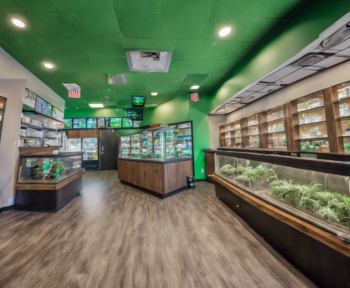As the world continues to urbanize and living spaces become smaller, the ability to effectively manage and maximize space has become a crucial skill for homeowners and renters alike. Whether you live in a tiny apartment, a compact condo, or a cozy house, mastering confinement through smart space management can make a significant difference in how you live, work, and enjoy your space.
In this comprehensive guide, we will explore a range of practical tips and strategies for making the most of limited space, organizing your belongings efficiently, and creating a functional and aesthetically pleasing environment.
Assessing Your Space
The first step in mastering confinement is to assess your space thoroughly. Before embarking on any organizational or design efforts, take the time to evaluate your space and identify its unique features, challenges, and opportunities. Here are some key factors to consider:
1. Room Layout and Dimensions
Measure the dimensions of each room, including the height of the ceilings. This will help you determine the available space and plan your furniture layout accordingly.
2. Natural Light and Airflow
Take note of the natural light sources in each room and ensure that they are not obstructed by furniture or decor. Good airflow and natural light can make a space feel larger and more inviting.
3. Storage Options
Assess the existing storage options in your space, such as closets, cabinets, and shelves. Determine if additional storage solutions are needed to keep your belongings organized.
4. Traffic Flow
Consider how people move through your space and ensure that there are clear pathways between furniture and rooms. Avoid cluttering high-traffic areas to maintain a sense of openness.
Decluttering and Organization
One of the most effective ways to master confinement is to declutter and organize your space. Clutter not only takes up valuable space but can also create a sense of chaos and overwhelm. Here are some tips for decluttering and organizing your space effectively:
1. Declutter Regularly
Go through your belongings regularly and declutter items that you no longer need or use. Donate or sell items that are in good condition but no longer serve a purpose in your space.
2. Maximize Vertical Space
Utilize vertical space for storage by installing shelves, wall-mounted cabinets, or hanging organizers. This can free up floor space and create a sense of height in your room.
3. Invest in Multifunctional Furniture
Choose furniture pieces that serve multiple purposes, such as a storage ottoman, a sofa bed, or a dining table with built-in storage. This can help you make the most of limited space.
4. Use Clear Containers
Store items in clear containers or bins to easily see what is inside and prevent clutter from accumulating. Labeling the containers can also help you stay organized and find items quickly.
5. Utilize Under-Bed Storage
Maximize under-bed storage by using bins, baskets, or vacuum-sealed bags to store out-of-season clothing, shoes, or bedding. This space is often underutilized and can be valuable for storage.
Space-Saving Strategies
In small spaces, every square inch counts. Implementing space-saving strategies can help you make the most of your confinement and create a functional and stylish environment. Here are some effective space-saving tips:
1. Foldable Furniture
Invest in foldable or collapsible furniture pieces, such as folding tables, chairs, or desks. These items can be easily stored away when not in use, freeing up space for other activities.
2. Wall-Mounted Desks and Tables
Opt for wall-mounted desks or tables that can be folded down when needed and tucked away when not in use. This is ideal for creating a workspace in a small room or corner.
3. Sliding Doors
Consider replacing traditional doors with sliding doors to save space and create a seamless flow between rooms. Sliding doors are ideal for closets, bathrooms, and tight spaces.
4. Mirrors and Glass
Use mirrors and glass elements to create the illusion of space and reflect natural light. Mirrors can make a room appear larger and brighter, while glass furniture can give a sense of openness.
5. Nesting Tables and Stools
Opt for nesting tables or stools that can be stacked or nested together when not in use. These versatile pieces of furniture are perfect for small living rooms or entertaining spaces.
Aesthetic Considerations
While mastering confinement is primarily about optimizing space and functionality, aesthetics play a crucial role in creating an inviting and harmonious environment. Balancing form and function can help you create a space that is both practical and visually appealing. Here are some aesthetic considerations to keep in mind:
1. Color Palette
Choose a cohesive color palette for your space to create a sense of unity and flow. Lighter colors can make a room feel larger, while darker hues can add depth and sophistication.
2. Open Shelving
Consider incorporating open shelving to display books, plants, or decorative items. Open shelving can add visual interest to a room and create a sense of airiness.
3. Greenery
Bring the outdoors in by incorporating plants into your space. Indoor plants not only add a touch of nature but also improve air quality and create a sense of tranquility.
4. Texture and Layers
Add texture and layers to your space through rugs, throws, cushions, and curtains. Mixing different textures can add warmth and visual interest to a room.
5. Statement Pieces
Incorporate one or two statement pieces, such as a bold artwork, a unique lighting fixture, or a vibrant rug. These pieces can serve as focal points and add personality to your space.
Frequently Asked Questions (FAQs)
1. How can I make a small room look bigger?
To make a small room look bigger, opt for light colors, utilize mirrors to reflect light, and minimize clutter. Additionally, choosing furniture with legs can create a sense of openness.
2. What are the best storage solutions for small spaces?
Some of the best storage solutions for small spaces include under-bed storage, wall-mounted shelves, multifunctional furniture, and vertical storage options like pegboards or hanging organizers.
3. How can I create a productive workspace in a small room?
To create a productive workspace in a small room, consider using a wall-mounted desk, utilizing vertical space for storage, investing in ergonomic furniture, and minimizing distractions through organization.
4. What are some space-saving furniture ideas for small apartments?
Space-saving furniture ideas for small apartments include sofa beds, murphy beds, extendable dining tables, nesting tables, and ottomans with storage. These multifunctional pieces can help maximize space.
5. How can I maximize storage in a tiny kitchen?
To maximize storage in a tiny kitchen, consider using magnetic racks for knives and spices, installing pegboards for pots and pans, utilizing vertical wall space for shelves, and incorporating pull-out or rotating storage solutions in cabinets.
6. What lighting options are best for small spaces?
In small spaces, it’s best to maximize natural light by using sheer curtains and positioning furniture away from windows. Additionally, consider incorporating task lighting, such as desk lamps or under-cabinet lights, to brighten specific areas.
7. How important is functionality versus aesthetics in small spaces?
Functionality is key in small spaces as it ensures efficient use of space and meets your practical needs. However, aesthetics play a crucial role in creating a welcoming and visually appealing environment. Balancing both aspects is essential for a successful space design.
8. What are some creative ways to divide space in a studio apartment?
Creative ways to divide space in a studio apartment include using room dividers, such as bookshelves or curtains, arranging furniture strategically to create distinct zones, and utilizing furniture pieces that serve as dual-purpose dividers, like open bookshelves.
9. How can I create a sense of openness in a small room?
To create a sense of openness in a small room, consider using light colors, incorporating mirrors to reflect light, choosing furniture with legs to create visual space, and keeping clutter to a minimum to maintain an airy feel.
10. What are some budget-friendly ways to maximize space in a small home?
Budget-friendly ways to maximize space in a small home include decluttering regularly, utilizing vertical storage solutions like floating shelves, repurposing existing furniture with added storage, and DIYing organizers using inexpensive materials like baskets or jars.
Mastering confinement through effective space management is a skill that can transform even the smallest of spaces into functional, organized, and aesthetically pleasing environments. By assessing your space, decluttering and organizing effectively, implementing space-saving strategies, and considering aesthetic considerations, you can make the most of your living space and create a home that reflects your style and personality.



